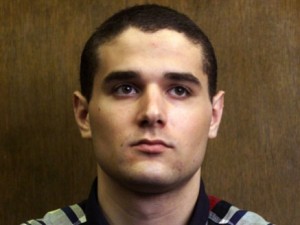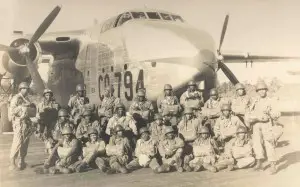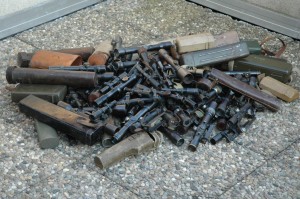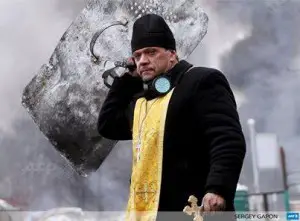Monthly Archives: February 2014
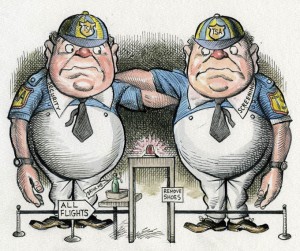 Now, it’s true that DC is kind of a world apart, a world where there’s been no recession and nobody works for a living. They’re just all collecting some kind of no-show or low-show government handout or another. But even though they might be bums, we’ve never questioned their right or ability to drive, which is not an intellectually taxing thing (unless you’re doing it in Ramadi or on the Nurburgring Altschleife). That’s why we’re not making the big bucks like the Special Olympics refugees at the Transportation Security Administration. When they’re not just groping, they’re groping for facts most of us learned in grade school:
Now, it’s true that DC is kind of a world apart, a world where there’s been no recession and nobody works for a living. They’re just all collecting some kind of no-show or low-show government handout or another. But even though they might be bums, we’ve never questioned their right or ability to drive, which is not an intellectually taxing thing (unless you’re doing it in Ramadi or on the Nurburgring Altschleife). That’s why we’re not making the big bucks like the Special Olympics refugees at the Transportation Security Administration. When they’re not just groping, they’re groping for facts most of us learned in grade school:
According to Brandt, an agent with the Transportation Security Administration took a look at her D.C. license and began to shake her head. “I don’t know if we can accept these,” Brandt recalled the agent saying. “Do you have a U.S. passport?’
Brandt was dumbfounded, and quickly grew a little scared. A manager was summoned, she says. “I started thinking, ‘Oh my gosh, I have to get home. Am I going to get home?’ ”
[T]he implication from the TSA agent seemed clear to Brandt: The District is not a state; TSA requires a state-issued ID to board a plane.
Nevermind that Brandt had used her brand-new D.C. license, the one marked “District of Columbia” over a backdrop of cherry blossoms, to board her flight to Arizona days earlier.
“She didn’t seem to know that it was basically the same as a state ID,” said Brandt, who had only recently traded her Maryland ID for one from the District. “D.C. is obviously not a state, but I didn’t ever imagine it would be a problem — I mean, the whole population of D.C. has to use these.”
It’s always funny to see some Washingtonian make a cautious and brief trip out into the provinces, only to find what a collection of losers and no-hopers are the minions of the Great And Mighty Oz who are cast out to due duty in the far reaches of the Empire, like Arizona.
The Washington Post, of course, unable to see anything buy nobility in the service of their substitute Jesus, sees this as “a new story for advocates of D.C. statehood.”
We see it as one more reason to disband the TSA and dismiss the untrustworthy human failures, wastes of sperm and egg every one, who staff it. And a reminder that nobody good, decent, moral, ethical, or intelligent has ever been been employed in TSA in any capacity whatsoever.
Is South Carolina nuts?
Maybe not the whole state, but a lot of its citizens seem to be. The headline noted the 65 gun permits revoked for mental illness once SC started comparing its mental health database with its gun permit database. And the lede was the 12 concealed weapons permit applicants who were denied because they came up hot on the mental health check.
http://www.youtube.com/watch?v=l-lJZiqZaGA
But the shocking thing to us was the assertion that the mental health unit of teh State Law Enforcement Division is adding 500 names a week to the database. How many South Carolinians are barking at the moon down there? That’s 26,000 nuts a year! SC has about 4.7 million inhabitants, so just a bit over 1/2 of 1% of them are going bats in a given year.
COLUMBIA, S.C. (AP) – The chief of South Carolina’s law enforcement agency says a law meant to prevent the mentally ill from buying guns has already led to 12 people being denied a concealed weapons permit.
Chief Mark Keel told legislators Friday that the State Law Enforcement Division has also revoked 65 permits because of the law approved last May.
The law ensured the names of residents declared mentally ill by a South Carolina court go into a federal database so they can be caught by a background check. It was already illegal to sell guns to someone who is mentally ill. But the lack of reporting meant gun shops didn’t get that information.
Keel says the agency’s new mental health reporting unit averages putting 500 names a week into the database.
via SLED: 65 Gun Permits Revoked.
The 87 mental patients (12 denials + 65 revocations) seem to be the tip of the nutberg.
So we thought we’d check some official data. Is a half percent of a state being nuts, we hate to use the word, but, normal? So we went to NIMH, which ought to have some good statistics on the nation’s laughing-academicians. Turns out, half a percent is nothing, according to the nation’s Official Keeper of the Nut Job Count:
An estimated 26.2 percent of Americans ages 18 and older — about one in four adults — suffer from a diagnosable mental disorder in a given year.1 When applied to the 2004 U.S. Census residential population estimate for ages 18 and older, this figure translates to 57.7 million people.2
Yipes, stripes! That means 1.25 million Palmetto Staters should be nuts, unless the state’s much saner than average.
Except it doesn’t seem right for more than one in four people to be laughing-academy material. So they break it down: 9.5% mood disorders (that doesn’t sound so bad, but wait); 18.1% anxiety disorders, 9.1% personality disorders, plus a percent or so for Schizophrenia or Autism. And it turns out that within each category, there are seriously disabling and “dude, you’re gunning for a phony disability” kinds of illnesses. They also count suicides as mentally ill, even when noting the peak suicide demographic is men over 85. (They might be despairing, but it’s hard to argue these elderly suicides are all nuts).
And yeah, “mood disorders” is a clinical term which doesn’t necessarily mean the teenage sulks, but could encompass full Norman Bates oughta-be-locked-up-itis.
Yes, their numbers don’t add up, and yes, they’re obviously not using the same definition as South Carolina.
Now, here’s another statistical check the Associated (with terrorists) Press reporter could have done, if he were interested in reporting rather than arguing. He could have asked himself… is the proportion of mentally ill people applying for pistol permits greater or lesser than average?
The last year for which SLED has posted the data is 2010, which shows a total of 119,340 pistol permits (the number is certainly much larger in 2014). That means:
- The percent of SC residents who have a license is approximately: 2.5%.
- The percent of LTC applicants who were revoked or denied for mental illness is approximately: 0.073%. That’s 73 thousandths of a percent.
And we wonder how many of these 87 will clear their names on appeal, because the mental illness adjudication applies to someone with a similar name, or was a transient thing (i.e. a period of depression not rising to the level of a disorder, resolved) years ago. But even if none of them do, it looks like the permit holders (and applicants) are saner than normal. Whatever “normal” is.
Able was I ere I saw Elba, is all we have to say about that.
Update:
While only up to 2010 stats are fully online, broken down by county, SLED (South Carolina Law Enforcement Division) has posted aggregate 2013 stats (the ones we want) as follows:
Active Permits as of December 31, 2013 —- 229,456
Permits Issued in 2013 ———————- 83,012
Permits Denied in 2013 ————————1,272
Permits Renewed in 2013 ——————— 38,617
Permits Revoked in 2013 ———————— 364
That means that:
- The percent of SC residents who have a license is approximately: 4.9% as of December 31.
- The percent of LTC applicants who were revoked or denied for mental illness is approximately: 0.038%. That’s 38 thousandths of a percent. The percentage who were denied and revoked for all purposes (including the nut jobs) is aboout 7/10 of a percent.
You’re looking at contraband here
What, the guns? These three beautifully engraved guns by the late Indiana engraving wizard Ben Shostle — a Luger, a Mauser, and a Colt — are being auctioned as a lot by Amoskeag Auction Company of Manchester, New Hampshire next month. But as it turns out, it’s not the guns: it’s the grips.
The little .25 hammerless Colt 1908 is out of the woods. As you can see from the picture (and do embiggen it), the Browning-designed pocket pistol’s grips are mother-of-pearl.
But the grips of the other two guns are ivory. We’re reminded of the famous statement by George S. Patton Jr.: “Only a pimp in a whorehouse would have pearl grips on a handgun! My pistols’ grips are ivory.”
Quite.
But as it turns out, there’s trouble with ivory.
Ivory is a natural material, which comes from the tasks of elephants. All three species’ tusks yield ivory, but the pure white, durable ivory we know on gun grips comes from African bush elephants, loxodonta africana. Because of habitat destruction and poaching, all elephants are endangered species. Therefore, traffic in newly-processed ivory has been banned for 25 years in the United States. In the rest of the civilized world, ivory that has been harvested in accordance with environmental and species-preservation best practices is still available for sale, with appropriate certifications. But the US does not accept that. So the only ivory you see on American guns is either old ivory, that predates the 1989 Convention on the International Trade in Endangered Species of Wild Fauna and Flora (CITES), or it’s false, artificial ivory. Doug Bandow writes at Forbes about the way the law has worked, right up until now:
Until now the rules were simple and sensible. Ivory imported legally, that is, prior to 1989 or after 1989 with CITES certification that international standards were met, could be sold. Older ivory usually can be identified by coloring, stains, style, wear, quality, subject, and more. Some features can be faked, but most of the older work simply isn’t replicated today.
Moreover, the burden of proof fell on the government, which had to prove that you violated the law. That standard is inconvenient for zealous prosecutors. But that’s the way America normally handles both criminal and civil offenses.
A new administrative rule promulgated by the Obama Administration (1) bans all sales of ivory items that are not documented as having been imported pre-1989; (2) establishes a presumption that all ivory, anywhere, in the USA, is contraband, a presumption that can only be rebutted with comprehensive documentation; and puts the burden on the possessor of the ivory to prove his innocence, whilst relieving prosecutors of the burden of proving anyone’s guilt.
The rules will be enforced by armed agents — including, we are not making this up, SWAT teams — of the Fish & Wildlife Service, which has been frustrated by the difficulty of finding and prosecuting actual poached-ivory traffickers, and has decided to pimp its confiscation and conviction numbers. To do this, it’s going to refocus on heirloom ivory by turning all possessors into criminals with a penstroke, and make lots of busts rapidly so as to have an excuse for increases in headcount and budget.
Resources have already been shifted from pursuing the criminal element — Bandow cites a pair of New York contraband dealers who were busted with millions of dollars’ worth of poached ivory — to targeting the easier-to-find heirloom market. The shift in the presumption of innocence and standard of proof means that the F&WS Fishtapo needn’t be inconvenience by that pesky Constitution or the blatherings of defense attorneys.
Why? In a .pdf from last November that predates the new rules, the Fishtapo explains that:
It is extremely difficult to differentiate legally acquired ivory, such as ivory imported in the 1970s, from ivory derived from elephant poaching. Our criminal investigations and anti- smuggling efforts have clearly shown that legal ivory trade can serve as a cover for illegal trade.
So they “solve” the problem, by making all ivory illegal. No decision for PC Plod to overheat his brain stem with; no pesky legal market. Not only do they no longer have to figure out who the illegal traffickers are hiding among the legal sellers, they don’t even have to look for the illegal traffickers anymore.
(Incidentally, that .pdf explains that the economic illiterates of the Fishtapo think that they’re reducing demand for ivory by destroying it… they explain how reducing the supply reduces the demand! Someone give those bozos the Nobel Prize for Inverted Economics).
We’re still looking for the actual NPRM, but if it’s as Bandow describes it, you know what else is banned? Bringing back your elephant trophy from an African safari. CITES allowed about 1430 sport-hunted elephants’ tusks to be exported from a variety of African nations last year, perfectly legally and with full international approval. After all, those nations use hunting as a key tool in wildlife management. Now, under the new rules, designed so that no Fishtapo agent need ever sweat, or even look for an actual criminal, to make a case ever again, they can’t be imported or possessed. Hell, they can’t be transported inter- or intra-state.
Whose idea was this? It’s hard to say, because it comes from Washington, where everybody lines up to cash his check, but no one lines up to take any responsibility. According to Bandow, the idea was cooked up in a star chamber somewhere in official Washington, with no input from the sort of people who might own an old Steinway with ivory keys — or an engraved, ivory-handled pistol.
Hat tip: Wizbang blog, which can’t resist snarking: “Of course, we know that Obama is interested in saving the animals from the land of his birth, and all, but…” Of course they’re joking.
One law for you, one law for them
Meet Kerry Kennedy (yes, of those Kennedys) — a jet-setting, pill-popping socialite who’s too important to take her knocks for a DUI crash-and-run in 2012. She’s one of the 9 or so of RFK’s 11 kids who wound up as druggies, and would have wound up as bums, if not insulated from that outcome by an immense family fortune. (One brother OD’d — no loss to humanity. At least two more were also heroin addicts, including Chavez-loving RFK Jr., who says he’s off it now. Another rolled a Jeep under the influence, crippling a friend — who was then dropped as a friend for being a cripple. Nice people, not).
Kerry Kennedy may agree to a plea deal over driving while drugged charges stemming from a 2012 accident so she can continue her extensive human rights work.
Kennedy, 54, is afraid a conviction would bring with it restrictions that would curtail her international travels – she has visited several dozen countries on humanitarian missions.
The plea deal was previously discussed between her legal team and prosecutors before being shelved, but her attorneys have brought it back to the table with her trial slated to start Monday, according to the New York Daily News.
Lawyers originally tabled the deal while preparing a defense explaining former Senator Robert F Kennedy’s daughter took Ambien by mistake – she meant to take thyroid medication, sources told the paper.
‘Our defense in this case is that Kerry Kennedy did not knowingly and intentionally ingest those sleeping pills,’ her lawyer explained Friday in court.
‘The pills are very similar,’ he added. ‘She took what she thought was her thyroid medication.’
The former wife of current New York Governor Andrew Cuomo, Kennedy was travelling between the Western Sahara and Brussels, Belgium during last week’s jury selection process, sources said.
Kennedy faces a misdemeanor charge of driving while impaired by drugs after colliding July 13, 2012 with a tractor trailer on a suburban New York highway, authorities said.
The “humanitarian work,” of course, is bullshit. Like the rest of her family, she’s helped no one but herself. She jets around giving speeches and feeling self-important, but has never physically lifted a finger to help a soul.
“I have too much regard for the lives of others, as well as my own,” she said, while insisting the law shouldn’t apply to her. So far, it hasn’t. When she slammed, stoned, into a truck and ran, her family clout made sure that it was her victim who got the ticket.
She fled the scene, then lied about the cause of the accident. Now she is standing on a fallback lie. Problem is, she told the arresting officer at the time at the time that she had carrots, cappuccino, and Ambien for breakfast. Ambien’s a Kennedy breakfast favorite: it’s what cousin Patrick was high on when he slammed into a parked car in Washington DC a number of years ago. And yes, Patrick played the, “Do you know who I am?” Kennedy Card to avoid prison at that time, too. Her uncle Ted — Patrick’s dad — threw down the Kennedy card to get away with more episodes of public drunkenness than entire fraternities, not to mention an actual vehicular homicide.
So the basis of her defense? She’s a Kennedy. “She is not seeking any advantage here because of her famous family,” Kennedy mob lawyer Gerald Lefcourt said piously, while seeking an advantage because of her famous family by pointing out all the Kennedy family members and hangers-on, who turned out to help their latest problem child get off. (Even including one horse addict, RFK, Jr.)
The Daily News says she won’t get jail time. Everybody should know that! Drunk, stoned, and entitled, Kennedys are just an everyday road hazard along the Acela Corridor, and if you forget that and get hit by one, you’ll get the ticket.
Wonder how long it is before her three daughters — all in Ivy League schools, her mouthpiece told the judge to put him in his place — are having their own drug raps broomed? “Do you know who I am?” Because it’s good to be liberoyalty.
Of course, some people are unimpressed with a name, no matter how famous it is. As the case of the cannibals and the Rockefeller reveals.
Updates
Kerry Kennedy took the stand, not something a defendant with a strong case does. First thing she did? “Do you know who I am” Kennedy card, complete with “My daddy was killed.”
Jurors listened impassively as Kennedy’s lawyer led her through a blatant bid for sympathy that included references not only to her being a Kennedy orphan, but a mom, a human rights leader, a fundraiser for Haitian orphans, an almost daily church-goer and a former Sunday school teacher.
She also dropped the fact that she’s the ex of anti-gun extremist governor Andrew Cuomo (D-Apalachin Summit).
Next thing? Admitted she’s been dropping Ambien for ten years.
No word on whether the prosecutor established that her normal breakfast was that day’s: carrots, cappucino, and drugs.
When guns are outlawed, outlaws are remarkably resourceful
The Washington Post has a remarkable story of a murderer’s shootout with the authorities. “What’s remarkable about that?” you might ask. “After all, murderers shoot it out with cops all the time.” True, but not like this: Samuel Sheinbein shot it out with guards at the prison where he was locked up in Israel.
Sheinbein and a buddy committed a particulary gruesome murder in the USA, killing, dismembering, and burning the remains of his victim, before absconding to Israel. As a Jew, they would not extradite him to the USA, but they did try him for various Israeli law violations, and he got a middling sentence (24 years) in an Israeli hoosegow.
As you might expect from a judicial system run by liberals, prison in Israel is apparently a pretty loosey-goosey thing, and he regularly came and went, even after they found out he was trying to buy guns on the outside. Whether he succeeded or took a gun from a guard is unknown.
On the plus side, they did finally whack him after he wounded three guards, so the remaining population of Israel (and the US) is safe from this crumb. So there is that.
Samuel Sheinbein, one of the most notorious murder suspects in Montgomery County history, was shot and killed Sunday during a firefight with prison guards inside a prison in Israel, according to Israeli officials. At least three guards were injured, one of them critically.
Sheinbein , 34, was 17 years old back in 1997, when he and a friend killed Alfredo Enrique Tello Jr., whose charred and dismembered body was found wrapped in trash bags inside a garage in the Wheaton area. Sheinbein then fled to Israel, where he eventually pleaded guilty to charges related to the case and was sentenced to 24 years behind bars in a prison in central Israel.
Shortly after 2 p.m. local time Sunday, Sheinbein opened fire on guards inside the Rimonim Prison in central Israel, authorities said. It wasn’t immediately clear whether Sheinbein was able to get the gun he used from a guard or had managed have it smuggled inside, said Micky Rosenfeld, an Israeli Police national spokesman.
“He opened fire at three security guards inside the prison itself,” Rosenfeld said.
Rosenfeld described the guards’ conditions as critical, serious and moderate.
Prison officials closed off part of the prison. Sheinbein managed to barricade himself inside a cell. He didn’t take any prisoners.
Counter-terrorism officers moved in. They tried to communicate with Sheinbein, but about 90 minutes after the initial incident, it ended quickly, police said. “He opened fire at the counter-terrorism units, and they shot and killed him,” Rosenfeld said.
Prior to the shoot-out Sunday, Sheinbein had been eligible to take leaves from the prison. About one month ago, while on such a leave, he tried to buy a pistol over the Internet, Rosenfeld said.
Officials there were trying to find out how he got the gun he used on Sunday.
“Today’s events are now under investigation by the police and the prisoner service,” the Israel Prison Service said in a statement. “It was complicated incident and there are still many questions that we need to answer but that will be done throughout the course of the investigation.”
His lawyer had tried to warn the prison governors that Sheinbein was in a suicidal state of mind. She seems to have misread him; we’d call his acts “homicidal.”
An updated story says that the gun Sheinbein used was smuggled in to prison (but it uses exactly that passive-voice construction, not saying who smuggled it in), explains the Israeli law that protected him from the American judicial system (but not the Israeli one), and describes a little more of the mayhem he caused on his way to eternity:
Before being shot and killed, Sheinbein managed to injure seven people: three prison guards, three special forces fighters and one fellow prisoner. One of the guards was still in critical condition Monday.
The heinous murder he committed in the USA 17 years ago was planned with meticulous care:
In Montgomery County in 1997, prior to Tello’s murder, Sheinbein had written a “Recipe for Murder,” listing weapons and clean-up equipment.
“It was as premeditated a murder as you can imagine,” Montgomery County State’s Attorney John McCarthy said Sunday of Tello’s murder.
So Sheinbein should probably be rotting in an American prison for whatever is left of his threescore and ten. However, Israelis consider their cons too good for our jails. (Sorry, but we’ll be keeping Pollard for a while). Maybe it’s that we cook the meat and the dairy in the same pans in the prison kitchen.
Still, sometimes Israelis, the most right wing of whom would be a liberal Democrat in the USA, are a little too liberal for their own good. They might want to look into that whole, “Let a prisoner have a furlough and come back with a gun,” thing.
The Parachute Infantry Regiment that didn’t fight
Even if you’ve studied all the combat operations in the European and Pacific theaters in World War II, you might not have heard of the 555th Parachute Infantry Regiment. That’s because the “Triple Nickel PIR” never deployed overseas; the segregated black unit was not wanted in either theater of combat. Army generals said that the problem wasn’t that the black troops wouldn’t perform; it was that white troops wouldn’t accept them.
As a result, the 555th PIR was committed not to combat, but to fight another threat: wildfires in the Pacific Northwest. It wasn’t a combat role, but the men did it, and did it well. In 1947, one of the very generals who hadn’t wanted them in 1944 forced their integration into the American airborne forces, and the name of the 555th vanished.
But [late 1SG Walter] Morris knew that, despite receiving second-class treatment, black troops were not second-rate service members—and in 1943, he was able to prove it. That year, First Sgt. Morris was assigned to lead a group of black troops at Fort Benning, where the army was training an elite new division: paratroopers. Although blacks were barred from serving, the proximity of the training field to the “colored” barracks allowed Morris to observe and learn the routines. Each day when the white trainees left the field, Morris assembled his men and put them through the rigors of paratrooper training. “They loved it,” he recalled. “They wanted to be soldiers, not servants.”
Morris in 2010 at a Pentagon ceremony honoring the 555th (D. Myles Cullen/Civ)
One day, the commander of the parachute school, Brig. Gen. Ridgley Gaither, witnessed the unauthorized training session and sent for Morris. “Who gave you permission to use my calisthenics field?” Gaither asked. “No one, sir,” replied Morris. “I just wanted to create a bit of morale and self-esteem for the men.”
via How These WWII Paratroopers Made Military History.
The story is from the tabloid Parade magazine that’s stuffed into the Sunday papers of those that still support their local anti-gun propaganda sheet. Morris passed a way a while back, in his nineties. And it was alnost accident that made him America’s first black paratrooper.
Gen. Gaither had been planning to conduct an evaluation of black paratroopers, when he saw 1DG Morris’s display of initiative and leadership. And, by the minarets of Serendip, here were a bunch of ready volunteers right in front of him: Morris’s men, who came from the all-black 92nd Infantry Division. The evaluation was a success, and led to the creation of the 555th. 1SG Morris was the first black man to pin on paratrooper wings; his descendants have continued his tradition of service to America.
Here is a short video about the 555th from a regimental website. It tells the whole history from test platoon to smoke jumpers to veteran survivors in a couple of minutes. You may wish to mute the music soundtrack (the footage was probably originally silent):
Today, the idea that black men might be unsuitable to be paratroopers is so ridiculous that it’s hard to encase within one’s living skull the bizarre notion that within within living memory, not only did some people feel that way, but many people felt that way. Enough people felt that way that American officers had real concerns about the disruption bringing the unit overseas might’ve caused. (That would not be the last time officers would underestimate the character of their men).
While the US at the time was racist from beak to tailfeathers, the Army looks pretty bad compared to the Air Corps, which committed all-black fighter and bomber units to combat in the European Theater. (The Army did commit a combat regiment of Japanese-American soldiers, the famous 442nd). And while General Gavin’s order to integrate the 555th with the 503rd Parachute Infantry Regiment in 1947 seems to be admirably ahead of President Truman’s 1948 desegregation order, the Army as an institution dragged its feet on desegregation. Some of the first units committed to the Korean War in 1950 were still-segregated black infantry units, that would not have existed as such if the Army had obeyed Truman’s order. As late as 1951, the Army was still drafting men with the intent of employing them in all-black segregated units. Of course, as late as the 1960s, black soldiers entered a Jim Crow world when they exited many Army bases. Times do change.
There’s nothing in the life of an infantryman that confers an advantage on one race over another. If scientists are right about the roughly 60 traits that are unevenly distributed across the races, every race gets some advantageous ones and some that are not so advantageous. (For example, blacks tend to have longer long bones and more fast-twitch muscle than, say, East Asians, giving them more sprinting speed, the combat utility of which is obvious. But East Asians do disproportionately well on the sort of time-speed-distance problems involved in shooting on the move). And these group differences, which have to do with where the median of a population is relative to another population, are tiny compared to the individual differences, which have to do with where an individual is under the bell curve that represents the population he’s a part of. In other words, knowing someone’s race doesn’t give us much practically useful information about his potential performance as a soldier (or much of anything else). It gives us some statistics and probabilities, which are useful when analyzing large groups but nearly worthless when dealing with individual human beings.
It probably has been expressed best by a legion of sergeants over the years: “Ain’t no black soldier or white soldiers here. All I see is green soldiers.” Not the only thing where an NCO has been out way in front of society at large. The only practical way ever found to judge men’s character has been as individuals, one man at a time. Nothing else matters.
Unfortunately, the men of the 555th, like their WWII cohort, are mostly gone from us now. Fortunately they left us a lot of history; here’s the late Walter Morris’s own story from the regimental web page.
Optics for Beginners, by Chris Hernandez
Here’s a small snip from a post by Chris Hernandez at The New Rifleman, a blog aimed at rifle n00bs. Hey, everybody’s a n00b once, and the variety of optics available now can be confusing, so a review of the basics hurteth not.
Example: for complicated reasons, when the SOPMOD I gear shipped, we got bare equipment with no instructions and no training, so we had to figure it out on our own. That was not entirely fun.
In this snip, Chris tells you what he used, and a few facts about the civilian rifleman. Some of these facts probably qualify as “Tough love.”
I’m not a sniper, nor do I have extensive experience with optics in the civilian world. What I do have, however, is a decent background in military optics from my twenty-plus years in the Marine Reserve and Army National Guard, including two combat deployments where I used an Aimpoint CCO (Close Combat Optic), Advanced Combat Optical Gunsight (ACOG), and Leupold MR/T (Medium Range Tactical scope). In the Marines my secondary MOS was 8531, Marksmanship Coach. I’m also a school-trained Army Squad Designated Marksman (SDM), meaning I’ve attended a two-week course which taught me to hit man-sized targets with an M16A4 out to 600 meters with iron sights and ACOGs. So I’ve got a decent background in medium to long range shooting, with and without optics.
So, first thing: If you’re a typical civilian shooter with limited training time and limited money for an optic and training ammo, there’s no reason to try to make yourself a sniper. It’s not going to happen. In the Army, with government ammo and decades of institutional marksmanship knowledge, the average soldier only shoots to 300 meters. And some of them struggle with that. So it’s not really feasible for the average civilian shooter, with extremely limited training resources, to expect to shoot like a sniper.
Second thing: For most modern combat, 300 meters is plenty far. I carried an M14EBR (Enhanced Battle Rifle) in Afghanistan, and I could consistently hit a torso-sized rock at 900 meters – at the range, with perfect weather conditions, a good firing position, on a stationary target at a known distance. In combat, with extreme heat or cold, unknown distances, hasty firing positions, adrenaline and moving targets, plus little annoyances like incoming fire, I would have been ecstatic to smoke a mofo at 200 meters.
Third: 300 meters is about the practical limit for civilians in any foreseeable domestic combat situation. If you’re preparing to defend your family from rampaging gangsters, it’s not likely you’ll find yourself sniping them from 500 meters. Urban combat is a close-in affair. In Iraq, enemy snipers sometimes engaged from within 100 meters. Unless you’re defending a farm in the middle of acres of cleared land, you probably won’t do any long range shooting
There’s a ton more good info on the site, so get thee hence and Read The Whole Thing™.
We’d add a few bullet points:
- Almost nobody is as good a shot as he thinks he is.
- If he hasn’t been practicing, he’s not the shot he used to be, either.
- And he’s definitely not the shot he thinks he was.
- ACOGs are the heat. They have something many scopes don’t: durability. In our opinion, they lose sales because they’ve got so many variations and models that it confuses people. Just get one with the right BDC for your barrel length and caliber.
- But for a home defense or truck gun, a high quality red dot is probably your best choice.
- In optics, you get what you pay for except at the very high tail of the cost bell curve, where most people can’t exploit the marginal differences in performance.
- The flipside of that? You’re better off buying a cheaper rifle and a more expensive scope than you originally planned.
- Lots of phony optics out there. Protect yourself (we wrote about this back in 2012, a couple of times).
- Scopes put the target and the aiming point in the same focal plane, so they’re extremely beneficial to novice shooters, and also to shooters who wear glasses or have some eye problems.
- Night vision compatibility is cool. Shooting with night vision is also a perishable skill that needs to be practiced. If you don’t already have a night vision monocular or goggles, and don’t have a need or a way to practice with them, don’t pay extra for this capability; all you get is bragging rights, nothing practical for you.
- Chris’s post is a great place for a beginner to, well, begin. Read The Whole Thing™ (you knew we were gonna say that, right?)
Finally, don’t be too eager to step in to complicated and advanced techniques like shooting at moving targets, shooting on the move, clearing structures, obstructed areas, or linear targets, or engaging targets that are higher up or lower than your position. Work on accuracy, accuracy, accuracy. Speed will come in due course, once you’re consistent enough to be accurate.
Another reporter concern-trolling the Ukrainian protesters’ arms

One of the “armed” protestors we saw had what looked like this Russian Baikal air gun. To gun-blind Fisher, this is the face of escalation.
This time, it’s the Washington Post’s lightweight “expert” on UW, Max Fisher. Fisher’s relevant experience? Nil. But hey, he has “a master’s degree in security studies from Johns Hopkins University.” Oooooh… can we touch him?
Fisher’s point, which is hilariously mooted by events now, is that Yanukovych must win because the protesters didn’t stick to his (Fisher’s, the armchair expert’s) beau ideal of Ghandian non-violence. No doubt Yanukovych is running around Kharkov showing everybody this in the Post.
You could hardly blame the besieged protesters if they wanted to fight firepower with firepower. Still, if this were to become a trend and protesters were to increasingly bear and use arms to defend against security forces, that could actually spell doom for their movement. It could be the best thing to happen to Ukrainian President Viktor Yanukovych since clashes reignited earlier this week.
via If Ukraine protesters are shooting back, that’s great news for the government.
Fisher’s justification for his ahistorical, now proven-incorrect, and just generally dumb-ass post? Research that he claims to have done for that master’s degree, but that is tragically unpublished.
Sometimes “master” is only half a word.
So what was his methodology, to the extent that he describes it?
When civil resistance movements popular uprisings adopt small arms use, they become much more likely to fail and the government becomes more likely to survive intact. That was a conclusion I reached, anyway, as part of my graduate research on government crackdowns against popular democratic movements. I surveyed 20 attempted uprisings over the past century and found overwhelming evidence that when protesters take up arms in large numbers they make their movement far likelier to fail. Within those cases, the chance that a popular uprising would “outlast” the government and ultimately secure its goals was cut almost in half if the protesters took up arms.
 Let us get this straight. He cherry-picked 20 insurgencies or uprisings from the literally thousands worldwide over a century, and proved what he wanted to prove.
Let us get this straight. He cherry-picked 20 insurgencies or uprisings from the literally thousands worldwide over a century, and proved what he wanted to prove.
Revolutions never win, it’s science, or at least whatever kind of cod science they teach in the Hopkins security studies program. (We can see it now… acres of journalists crafting narratives around anecdotes, while barnacled professors nod paternally).
Revolutions never win if they take up arms. And now back to you, at the Congress of the Republic of Vietnam.
But before we do that, let’s mine Fisher’s folly for some more examples of his, er, mastery. This is more mastery than what lots of people write:
It’s really, really difficult to overstate the importance of the military in moments of mass popular protest or uprising: ultimately, they have the monopoly on force, and they can decide the outcome if they want to.
Got that? If the rebels take up arms, the military has a monopoly of force.
See, that’s why the Iraqi Sunni minority took their licking in 2004 and we never heard another peep out of them. More mastery?
[T]he protesters are legitimizing the use of deadly force, and eroding the taboo against open shooting…
Max Fisher, Master in Security Studies from the Bitch Had It Coming School of Interpersonal Relations. See, what Max understands from his classroom mastership, that you probably didn’t pick up out at the war he’s spent the last bakers-dozen years not participating in, is that the nobility and purity of the martyrdom of the protesters is only noble and pure if they just lie there to get martyred. Well, maybe they can hide a little. But fighting back is right out.
Needless to say, the 1st Armored Division will never be commanded by a man with a Master in Security Studies from Johns Hopkins University. And that’s a good thing.
Now, Max is not very bright, and he’s not very honest, but he’s not a complete imbecile, and he does find a truffle in his continual rooting:
[P]opular uprisings ultimately succeed because the military sides with them, explicitly or implicitly. We saw this in Romania in 1989, for example, when the military largely refused orders to put down protests, helping to doom leader Nicolae Ceaușescu. And we saw it in Egypt in 2011, when the military parked tanks around protesters to protect them from security forces, and shortly after forced out President Hosni Mubarak.
He has a point there, and what cemented the victory — so far — of the Ukrainian protesters was the volte-face of the actual units that initiated the shooting, or at least, the command echelons high above them. The Ukrainian Army stayed in its barracks, but the Interior Ministry, police, and other security services put their guns at the disposal of the revolution. After it was clear the revolution shot back.
But that becomes much less likely if protesters start using small arms. Militaries are just much less comfortable aiding a protest movement that shoots back
This is, of course, nonsense. The protest movement is only shooting “back” if the military (or militarized police) are shooting at them.
[W]hen protesters and police are shooting one another in the streets, the military becomes more likely to step in.
But the military can pick either side, or neither. In 1956, most of the Hungarian military picked the rebel side. (They got their clock cleaned). In 1953, the nascent Nationale Volksarmee and the Volkspolizei picked the government side. In 1981, the Polish Army stepped in between protesters and their own Soviet overlords. In 1968, the Czechoslovak Army sat it out. And that’s just Europe.
Starting as early as 1973, Afghan citizens began resisting their nation’s “government monopoly of force.” How’d that turn out? (Well, the repercussions are not done repercussing, yet, but the civilians won by 1978, and again by 1989, and again by 1992. And then blew it all infighting).
So no, Max Fisher’s tiny, cherry-picked, molested little data set doesn’t prove a damn thing. And he needs to get out more — and not to the hotel bars where the Post reporters usually write their stuff based on what their local stringers bring them.
We wonder if he makes them say, “yes, Master.”
Update, and a thought
Compare the frightful performance of the US media with the performance of the state-controlled Ukrainian media and it;s not too different; here’s a recounting of a couple of young Ukrainian activists’ encounter with their own Piers-Morgan-like shill newsreader.
A thought: however the young rebels feel about the events of the last weeks, tomorrow will dawn on a Ukraine still surrounded by Russian power, and still divided ethnically, politically and now, in loyalties. There are several paths forward from here, but they’re all difficult.
Update II
Part of the backlash is a call for a gun rights constitutional amendment in Ukraine. Sounds like an idea whose time has come. Peace, out, as the hippies say.
A Ukrainian Churchman on Events in Ukraine
The following was placed, apparently by a supporter of the Ukrainian Orthodox Church, as a comment to Saturday’s Ukraine post. At ~5000 words we thought it a bit much for a comment, but after skimming it, instead chose to post it as an entry. Men of the church have been present in every phase of this insurgency, revolution, whatever you wish to call it; the churches opinion is valuable to all of us.
During the seventy years in which religion of all sorts was suppressed in the Soviet Union, the Russian and Ukrainian Orthodox churches established what were essentially exile branches in United States. (It’s more complicated than that, trust us on that one). The Metropolitan interviewed here is the Primate or leader of the Ukrainian Orthodox church in the United States — think of him as their Pope or Archbishop of Canterbury, but ruling over an exiled branch of what was for decades a suppressed, corrupted and divided church at home.
One of His Eminence’s most interesting observations is that the deployment of snipers by the government forces was counterproductive for them. Instead of making the demonstrators disperse, it solidified the protesters’ hostility and probably sealed Yanukovych’s political fate; even his own party turned on him. (In fact, even the security services that deployed the snipers changed sides).
Because of the piece’s length and its tangential nature to our subject matter here, we’ve put most of it after a “more” jump. We hope that His Eminence’s optimistic outlook reflects a better understandin of the nation and the crisis than our own. — the Editors.
Ukrainian Orthodox Church in the US. Learn about the issues surrounding the violent protests in the country and what is at stake as well as the role of the Orthodox Church in creating peace and moving forward.
Transcript
Ancient Faith Presents…:
Protests in Ukraine
Ancient Faith Radio · February 22, 2014
URL: http://www.ancientfaith.com/podcasts/features/protests_in_ukraine
Audio length: 29:00 minutes
Transcript published: February 22, 2014
AFR’s Kevin Allen interviews His Eminence Metropolitan ANTONY, Primate of the Ukrainian Orthodox Church in the US. Learn about the issues surrounding the violent protests in the country and what is at stake as well as the role of the Orthodox Church in creating peace and moving forward.
Over the past three months, Ukrainian protesters have occupied Kyiv’s Independence Square. They’re demanding closer ties to the European Union, changes to the constitution, and an altering of the government’s power structures. There’ve been recent, violent clashes, with hundreds of people killed by government forces and protesters in the past few weeks. Orthodox and Catholic priests have courageously ministered to both protesters and government forces. The protests have been framed by many Western media as a “Russia versus the West or European Union” conflict. To help all of us sort through this volatile crisis, Ancient Faith Radio’s Kevin Allen interviewed His Eminence Metropolitan Antony, Primate of the Ukrainian Orthodox Church of the United States. This is a pre-recorded program.
Mr. Kevin Allen: This is Kevin Allen for Ancient Faith Radio, and my guest is His Eminence Antony, Metropolitan and Prime Hierarch of the Ukrainian Orthodox Church in the United States. Your Eminence Antony, thank you for speaking with us about the very fluid situation in the Ukraine.
His Eminence Metropolitan Antony: Thank you for inviting me to share the ideas and thoughts with the public, the Orthodox public.
Mr. Allen: Yes, and I understand, Your Eminence, you’ve been up all night watching the Ukrainian parliament on television to keep up to date.
His Eminence Antony: Absolutely. It’s at the same time a fascinating experience but also a rather frightening experience, because things are moving so quickly.
Mr. Allen: They really are. Your Eminence, let me begin here. In the Western media, the crisis in the Ukraine has tended to be portrayed as a struggle between a Russian-aligned Ukrainian government, almost a puppet government in some analyses, versus a Western-, European Union-leaning opposition. Do you think this is a fair and correct assessment of the situation by the Western media?
His Eminence Antony: Well, on the surface and probably at the beginning of the crisis, I believe that that probably was a fair portrayal. The political divisions between eastern and western Ukraine have been pronounced since modern Ukraine appeared on the scene, back after World War II, when the Western Allies and the Soviet Union came to an agreement about the boundaries of Ukraine, what they would be. And eastern Ukraine consisted mostly of areas that were formerly integral parts of the Russian empire, and the western regions of the Ukraine were those dominated for decades, if not centuries, by the likes of the Polish and Lithuanian and Austro-Hungarian empires. But since the end of World War II, the borders of the Ukraine have basically consisted of what we know as Ukraine today, except for the Crimean peninsula, which was gifted to Ukraine in honor of the 300th anniversary of a treaty that the tsar made in 1654 with the head of the Cossacks of Ukraine. So the Crimean peninsula was not added until 1954, formally, although it was included as part of Ukraine in the Soviet constitution, several decades before.
Good-bye, Lenin!
The Associated (with Terrorists) Press took a few videos of Lenin statues biting the dust in Ukraine this February and edited them together. “Raz, dva!” (“One, two!”) Craaaaash!
Couldn’t happen to a nicer guy. (Well, Stalin, but we think any statues to him didn’t survive Ukrainian independence).
From the comments at YouTube:
[W]e got rid of Lenins statues in Georgia even before USSR was dissolved, clearly Ukraine is on the right track.
and…
The shackles have been broken, the people are freed, and Ukraine will NEVER go back in Putin’s lap! God bless the free people of Ukraine. FUCK PUTIN!
From Syria with love <3
and..
What is STUNNING is that, in 2014, statues of this monster were (and are) still standing ANYWHERE in Ukraine. What in God’s name TOOK so long?
Of course, it is YouTube, so there are a lot of dumbass, retarded, and bigoted comments, too.
Ukraine is not out of the woods. Clearly Yanukovych’s (and therefore Putin’s, because Y never had an opinion P didn’t issue to him) next objective is to propose a partition along linguistic/ethnic lines, with Russia retaining the East around Kharkov and the entire coast, including Crimea. The native inhabitants of Crimea were not predominantly Russian, but Stalin-era ethnic cleansing took care of that.

Kevin was a former Special Forces weapons man (MOS 18B, before the 18 series, 11B with Skill Qualification Indicator of S). His focus was on weapons: their history, effects and employment. He started WeaponsMan.com in 2011 and operated it until he passed away in 2017. His work is being preserved here at the request of his family.



